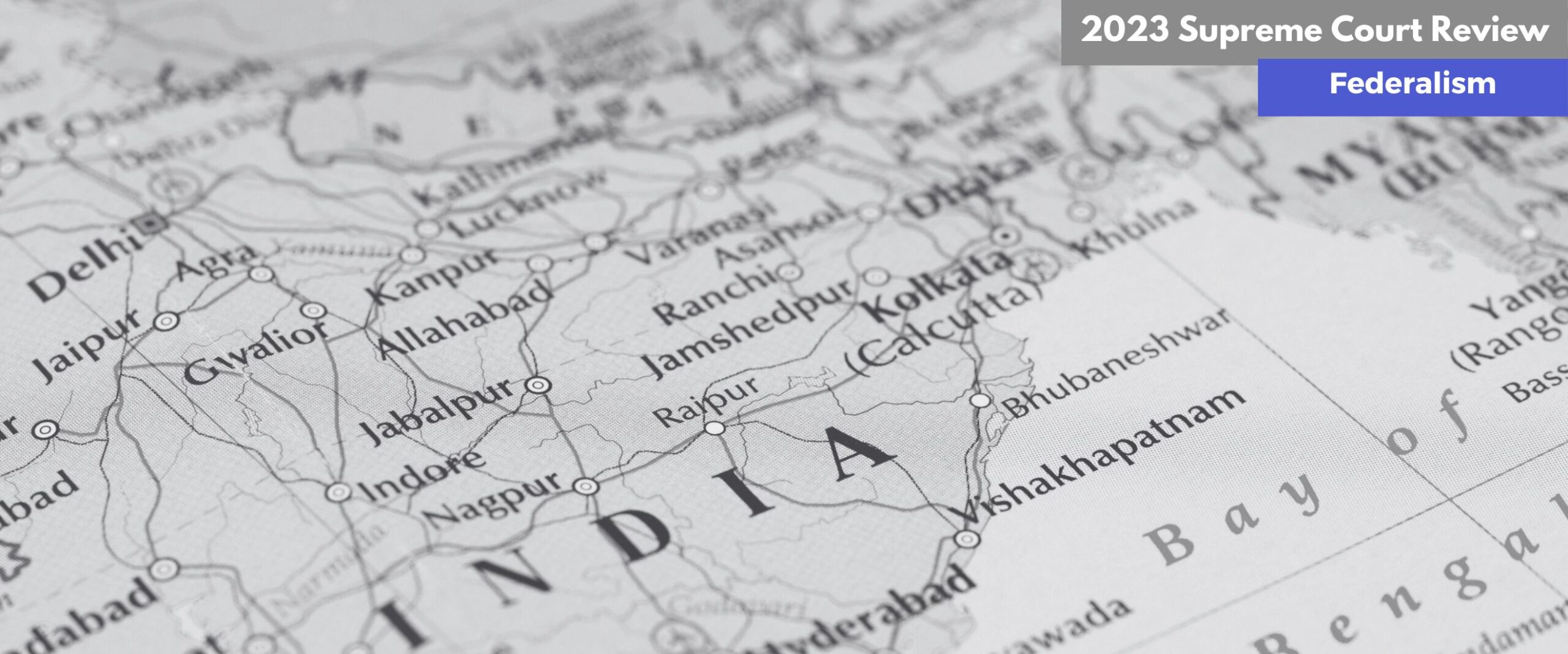Analysis
2023 Supreme Court Review: Federalism
In two Constitution Bench cases, the Court clarified centre-state relationships in an asymmetric federal structure

Discussions about India’s unique federal structure predate the Constitution itself, but 2023 stands out. Key Constitution Bench cases centred around asymmetric federalism and the interplay play between Union power and representative democracy.
Here we trace the Court’s understanding of asymmetric federalism in two cases that concerned two special units of the Country—Jammu and Kashmir and Ladakh and the National Capital Region of Delhi.
In the first case, a five-judge Constitution Bench led by CJI D.Y Chandrachud upheld the abrogation of Article 370, which revoked the special status granted to J&K, rejecting the idea that J&K retained internal sovereignty. “Residual legislative powers cannot be equated to residual sovereignty,” the Court said. “It instead reflects the value of federalism and the federal underpinnings of the Constitution of India.”
In the second, another Constitution Bench led by the Chief held that the Delhi government, and not the Union, had power over administrative services, as Article 239AA creates an asymmetric federal model with the Union government at the centre and the NCT government at the regional level.
A commonality in both was the Court’s emphasis on the fact that in an asymmetric federal structure, neither the Union nor the states (or union territories) have complete control.
Upholding the abrogation of Article 370
No conversation about federalism in India will be complete without a mention of the Court’s understanding of this feature in the Article 370 judgement. The case asked whether Jammu and Kashmir’s accession to India meant complete integration. Whether the fact that it had its own flag and constitution indicated the retention of internal sovereignty? Are Union Territories equal parts of India’s unique federalism?
The petitioners had asserted that given the words of the Instrument of Accession, J&K was an integral part of India but retained internal sovereignty. The fact that it has its constituent assembly, its flag and internal laws was proof of the retention of this sovereignty. History, the petitioners argued, played an important role in establishing this sovereignty. A constitutional promise was made to ensure the erstwhile state’s accession to India—that it would retain its sovereignty. This promise was enshrined under Article 370 and with the abrogation, was broken. The state’s bifurcation into the union territories if J&K and Ladakh, they claimed, was improper as a state was “reduced” to a lower unit of the federal structure.
The Union contended otherwise. With the accession to India, they said, J&K relinquished all its sovereignty and accepted the supremacy of the Indian Union and Constitution. What remained was merely autonomy on certain aspects of governance—that was common to all states that were part of the Indian Union as enshrined in List II. India’s federal structure was largely unitary. The reorganisation of the state into two union territories was permissible under Article 3 and not permanent as statehood would be restored to J&K in due time, the Union argued.
The five seniormost judges of the Court heard both arguments over 16 days and, a little over three months later, delivered their decision. Decoding India’s federal structure, the Bench held that J&K had internal autonomy, not sovereignty. The special circumstances of its accession and its special treatment in the Indian Constitution were a symbol of asymmetric federalism and not proof of internal sovereignty. The bench remained silent on the contours of Article 3 and the validity of the reorganisation of the State, owing to the Union’s promise of restored statehood.
NCT of Delhi v Union of India
The Court was called upon to interpret Article 239AA of the Constitution, which lays down special provisions concerning Delhi. The question was whether the Government of NCT of Delhi had the power to make laws under Entry 41 of List II—regarding State Public Services and the State Public Service Commission—and the co-extensive executive power on civil servants.
The Bench unanimously held that the Delhi Legislative Assembly has the power to make laws extending to all subjects in the State List of the Seventh Schedule of the Constitution, except public order, police and land—subjects expressly excluded by Article 239AA. The court observed that Article 239AA was incorporated “in the spirit of federalism, with the aim that the residents of the capital city must have a voice in how they are to be governed.” the Court observed.
There exists a “triple chain of command” in governance, the Bench stated. Civil servants are accountable to ministers, ministers are accountable to the Parliament/legislature and the Parliament/legislature is accountable to the electorate. This ensures democratic accountability. If a democratically elected government is not provided with the power to control the officers posted within its domain, then its responsibility towards the legislature and the public gets diluted, the Court added.
The judgement noted that an unaccountable and non-responsive civil service creates a possibility that civil servants, who play a decisive role in the implementation of government policy, “may act in ways that disregard the will of the electorate.”
